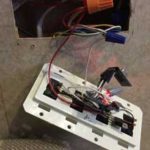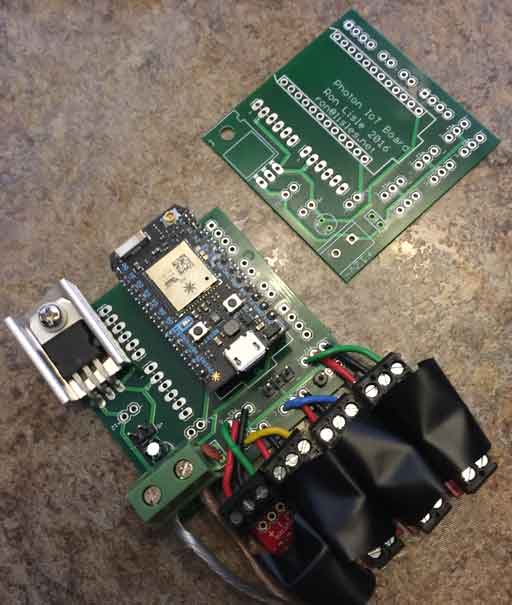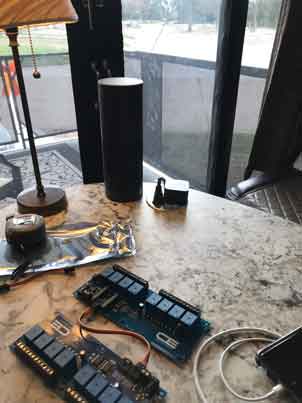
As I mentioned in the previous post, I’m going to give the ControlEverything.com boards a try. I’ve received the 8 relay Photon board, an 8 relay I2C expansion board, and the cable to interconnect them.
So to start off, I plugged a Photon into the 8 Relay Photon board, connected 12v to the board, and worked through their getting started tutorial.
I flashed the Photon with the example I2C scan code, and it immediately detected the I2C port at address 32.
Next I tried out the example from their NCD8Relay library on GitHub. This worked great. It toggles the relays in various ways. You can hear the relays toggling, in addition to seeing the status LED of each turn on and off.
So next I needed to figure out how to integrate this board with Patriot. Currently Patriot assumes a dedicated pin to control each device. Since the ControlEverything.com boards use I2C, I’d need to make some changes.
So next I created a new Patriot plugin library named NCD8Relay. This plugin should work with any of the NCD relay boards. There are two different I2C chips used on the boards, so addressing needs to take that into account. Since I don’t have any of the other sized relay boards, only the 8 relay photon and I2C expansion boards are tested at this point.
So having extended Patriot with the NCD8Relay plugin, I verified operation of the boards using both the iOS app and Alexa smart home skill. This all looks pretty good, so the next step will be to mount the boards behind the lighting control panel and wiring them up. That’s coming up in the next post.

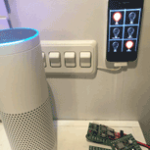 This weekend I posted to
This weekend I posted to 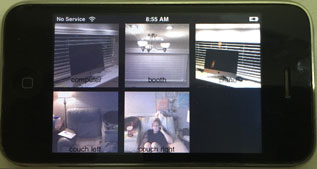
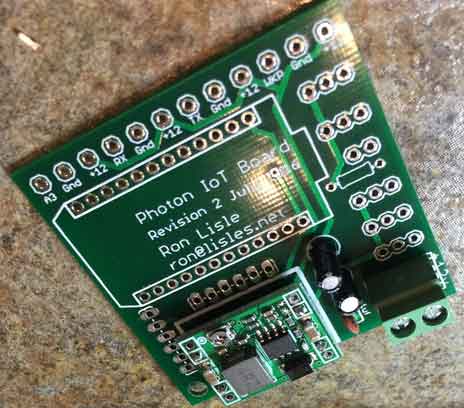
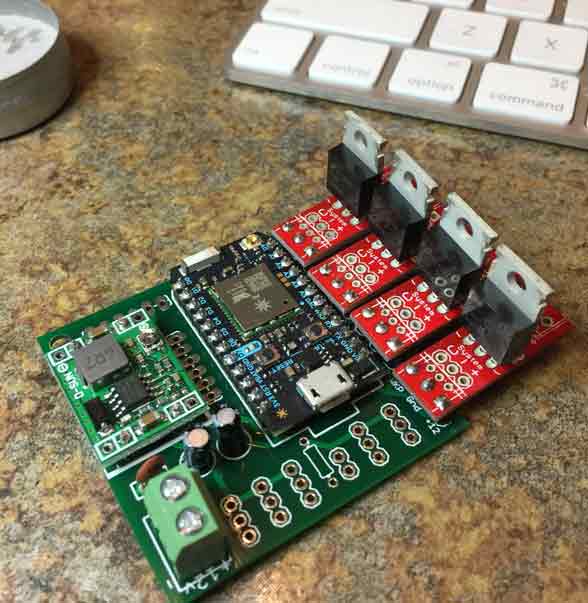
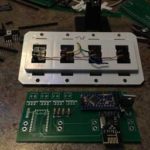 At this point I’ve installed about a dozen Arduino Pro Mini based controllers in my RV. These are very inexpensive, about $2 each, but suffer from several limitations:
At this point I’ve installed about a dozen Arduino Pro Mini based controllers in my RV. These are very inexpensive, about $2 each, but suffer from several limitations: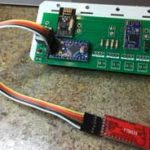 In my usage case, I’m mounting these things above ceilings to control lights, and behind wall switches to read and broadcast switch state. This means every time I need to change or debug them, I have to open up the wall, which means removing the switch plate and switch or lamp fixture to get to them.
In my usage case, I’m mounting these things above ceilings to control lights, and behind wall switches to read and broadcast switch state. This means every time I need to change or debug them, I have to open up the wall, which means removing the switch plate and switch or lamp fixture to get to them.